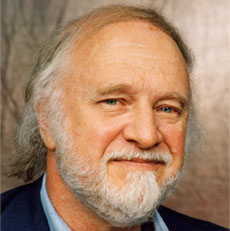The Shrinking Man: An Introduction
To the reader:
While I have told this story many a number of times in past interviews, it has never been an introduction to the novel itself, which is appropriate at this time.
How did I get the idea for this story? As in most cases in my early days of writing, I got it from a movie. The film starred Ray Milland and featured Aldo Ray. In one scene, Ray Milland leaves Ray’s apartment angrily and, by mistake, puts on Ray’s hat instead of his own. Ray’s head being considerably larger than Milland’s, the hat immediately comes down over Milland’s ears and eyes. My immediate thought—and it was immediate—was “What if a man put on his own hat and had the same thing happen and realized that his head was smaller than it had been before?”
The rest followed in its course. I prepared an outline while my family and I were living in Gardena, California.
We moved to New York in 1954 and, after living briefly in Bay Shore on Long Island, rented a small house on the north shore of the island in a community called South Beach which was a little east of Port Jefferson. The house had a cellar in it reached by going down outside steps with folding doors over them. I decided that this would be an ideal location for the section of the novel—the major one—where my hero was imprisoned and getting smaller every day, his life endangered not only by the prospect of disappearing altogether but by the menace of being killed by a black widow spider before he disappeared.
It was down in this cellar that I actually wrote the novel. Not only was it quiet and isolated from the children, but also it had an environment that I could use continuously. I did not have to keep notes on the environment. It was right there and all I had to do was imagine what my shrinking man would do from day to day. There was even the half stone wall with a piece of cake on it. There was no spider web since I knew that black widows did not display themselves at all but hid under things. I did not visualize a tarantula; I don’t think one would find one on the north shore of Long Island. That came later in the movie.
Every morning, after breakfast, I would bundle up (it was cold in that cellar) and go down to where I had an old rocking chair I sat on with my pad and pencil and wrote what occurred to me that day. It was interesting for me to imagine how my protagonist would make use of what was in the cellar. I changed nothing in the environment, just used it for my story. I have used this method of writing a novel in Hunger and Thirst and what became Somewhere in Time. It is an intriguing way to write a novel; to actually be there in the environment you are writing about. Very stimulating to the imagination. Even more so to make use of unexpected occurrences. For instance, the first time I heard the furnace in the cellar kick on, I thought of how startling the sound would be to my little man. His reactions were, of course, my own, his thoughts my own. But, in a strange way, they were his; I was just an observer describing what he was doing and thinking.
After a brief submission, the book was purchased by Gold Medal and published.
Although I had grown up back east in Brooklyn, I had been (well, since I was old enough to be aware of them) fascinated with movies and had a dream about writing for them. When I was seventeen, I wrote a letter to Val Lewton praising his films and telling him that I figured out several methods he used to frighten people that were based on the craft of frightening people unexpectedly. He answered my letter graciously and told me that he and his editor Mark Robsoon, were “delighted” by my observing what they did in their films. I would have been overwhelmed to learn that, someday in the future, Jacques Tourneur would actually be directing a script of mine.
While living in Los Angeles from 1951–1954, I made various attempts to get script assignments, none of which succeeded. I came to the conclusion that, the only way I would ever get such an assignment, would be to sell Hollywood a novel and demand the right to write the screenplay.
That is the way it worked out. I had an agent in Los Angeles named Al Manuel who submitted the manuscript of The Shrinking Man to a party. When we arrived, my mother, who was watching our two children, was lying on the couch in the small living room. She rose up on one elbow and said “Hollywood beckons.”
I telephoned Al Manuel and discovered that I could, indeed, do the script. I’m sure they figured it would be an unsatisfactory first draft, which they could have re-written by one of their contract writers.
Fortunately, it did not work out that way. The script got me started in the movie business. To make use of Oliver Onions’ title, I was ready for “The Beckoning Fair One.”
When I went to the studio to watch them shooting the film, I met its director Jack Arnold (who became a friend) and was taken back by the unusual resemblance of the cellar set to the cellar I had written the book in. It was an intriguing déjà vu.
I hope you find the novel interesting to read. Structurally, it is different from the film, which, at the time, disturbed me. I now accept it since the film has come to be regarded as a minor science-fiction classic. But, if you have only seen the film, you may find its novel genesis interesting to examine.

Richard Matheson

Peter Straub on The Shrinking Man
Read Biography
Richard Matheson—The Shrinking Man: An Introduction
Richard Matheson described the writing of his novel The Shrinking Man in this new introduction, written for a limited edition published in 2001.
The Novelist Goes to Hollywood: Three Letters on The Shrinking Man (1955–56)
Audio: Richard Matheson reads from The Shrinking Man (1956)
Other Novels by Richard Matheson





